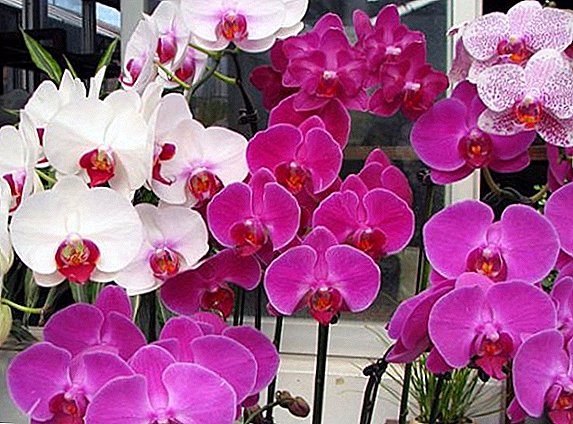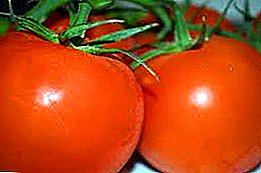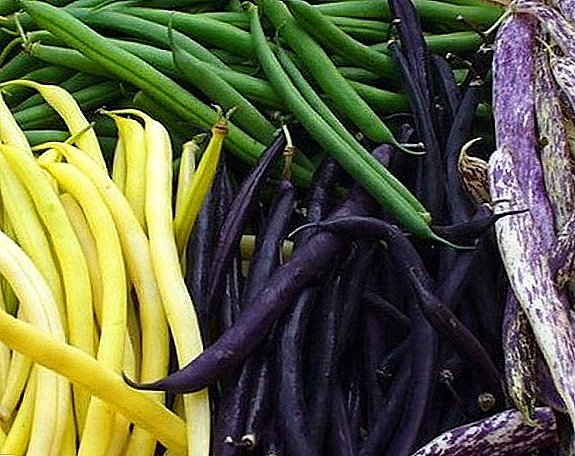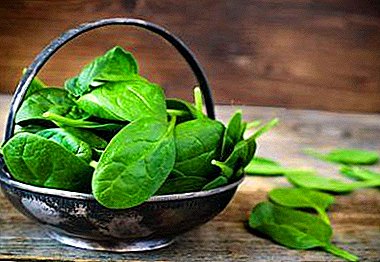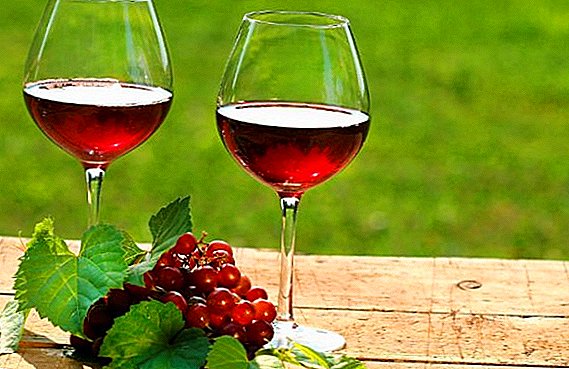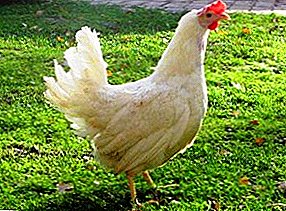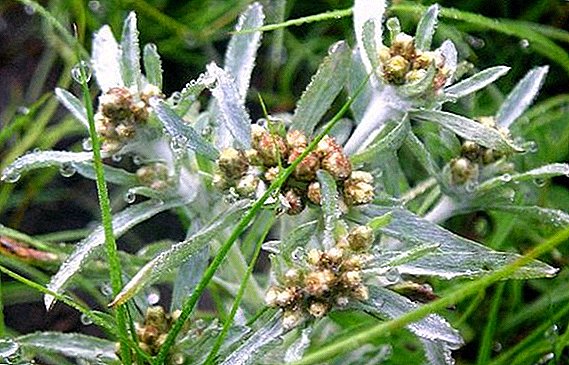 Toad grass has long been regarded by the people as the life-giving gift of nature. The plant was recognized as a medicine at the dawn of medical science. Even today, in spite of the progress of the industry, it has been successfully used by folk and official healers as an effective means for healing wounds, as well as help from the "toad of the chest." Hence the popular name of the culture. And in scientific sources, it is referred to as the swamp lozenge. What is a medicinal potion, what healing properties it has, when and how it is used - you will find answers to all these questions later in the article.
Toad grass has long been regarded by the people as the life-giving gift of nature. The plant was recognized as a medicine at the dawn of medical science. Even today, in spite of the progress of the industry, it has been successfully used by folk and official healers as an effective means for healing wounds, as well as help from the "toad of the chest." Hence the popular name of the culture. And in scientific sources, it is referred to as the swamp lozenge. What is a medicinal potion, what healing properties it has, when and how it is used - you will find answers to all these questions later in the article.
How it looks and where it grows
Externally marsh stalkberry (Gnaphalium uliginosum) is a low grassy annual of the Compositae genus. It is easy to learn the grass by the gray-colored felt tomen that densely covers low stems.  The maximum height of bushy stands reaches no more than 30 centimeters, and in rocky unfavorable areas it can reach only 5 centimeters. At the base of the dense thick stem that sometimes lignifies in the root part, a lot of side branches depart.
The maximum height of bushy stands reaches no more than 30 centimeters, and in rocky unfavorable areas it can reach only 5 centimeters. At the base of the dense thick stem that sometimes lignifies in the root part, a lot of side branches depart.
Did you know? The most ancient information about the use of herbs as therapeutic agents was found by archaeologists during excavations in the territory of the modern Iraqi city of Sumer. Scientists believe that it was in the area that phytotherapy began to emerge.A characteristic feature of the grass is the next, all-red foliage, which is 5 centimeters in length, and small, hoholed, flowers of light yellow color. Complex spike-shaped inflorescences appear on the marsh in early June and run wild all summer.
Herbaceous annuals also include savory, rudbeckia, borage, dimorpoteku, hibiscus, adonis, snapdragon, clarika, cornflower, and dicenter.After flowering on thick peduncles, small, smoky-green seeds of an oblong shape ripen. To the best of their development, they begin to become covered with transparent papillae and stiff hairs. It is extremely rare to have bare grains.
 They reach full ripeness at the end of September when the tuft disappears from the top of the boll. Distributed by birds and self seeding. From one bush can be collected about five hundred seeds. And they save germination up to 5 years.
They reach full ripeness at the end of September when the tuft disappears from the top of the boll. Distributed by birds and self seeding. From one bush can be collected about five hundred seeds. And they save germination up to 5 years.The toad or cut-through grass grows in damp marshlands located closer to the water bodies. And they know it on all continents of the globe. But most of all representatives of this kind are concentrated in South and Central America.
Important! Experts warn about the potential dangers of herbal medicine and possible side effects. Along with synthetic drugs, popularly called "chemistry", herbal remedies contain many biochemical substances whose effects on the human body are unpredictable. Moreover, the composition of plants is constantly changing depending on the characteristics of the soil, groundwater and external sources of pollution.In Ukraine, mass harvesting of raw toad grass is carried out in Rivne, Volyn, Kharkiv, Khmelnytsky, Ternopil, Sumy, Zhytomyr, Kiev and Cherkasy regions. Also significant reserves are available in the Carpathians and Transcarpathia.

Chemical composition
The grass of the dried grass has found its application in medicine, thanks to the unique components in its chemical composition.
Important! It is recommended to collect the grass of the marsh for medical purposes away from busy highways and industrial production. In the depths of nature, it is more likely to get environmentally friendly raw materials.In the fabric fibers of all parts of the plant are present:
- tannins - contribute to astringent effects on the human body, and also have a tonic and rejuvenating effect;
- essential oils - purify blood vessels and organs from slags and toxins;
- resins - prevent obesity, because they contribute to the uniform distribution of fatty acids, play the role of a natural emulsifier;
- carotene;
- thiamine;
- retinol;
- vitamin C;
- flavonoids - control the degree of permeability of the blood arteries and small vessels, contribute to their strengthening and elasticity;
- phytosterol is very similar in structure to cholesterol, but is characterized by antioxidant, immunostimulating and anti-atherosclerotic effects;
- Gnafalin alkaloid - affects the central and peripheral nervous system, the state of the arteries and muscle mass.

Medicinal properties
Recipes for the preparation of a healing potion, preserved in the writings of all well-known healers of the world, testify to the recognition of the medicinal properties of cusp cusp.
In ancient sources, treatment of diseases of the gastrointestinal tract, cardiovascular system, as well as open, poorly healing wounds and burns was mentioned.
Today, the scope of the plant has not changed at all, except that the terminological names of specific diseases have appeared.
Modern phytotherapeutists and folk healers advise using herbs for gastritis, gastric and duodenal ulcers.
In case of gastritis and ulcers, they use yucca, white acacia, viburnum, slinging onions, safflower, Lyubka bilusty, black-fruited mountain ash.In the course of treatment, an anti-inflammatory and wound-healing effect is observed. Pain is also reduced.
 Cardiologists note the beneficial effects of gnaphalin alkaloid on blood vessels and capillary branches. As a result of the herbal drug, blood pressure is normalized and blood vessels are strengthened.
Cardiologists note the beneficial effects of gnaphalin alkaloid on blood vessels and capillary branches. As a result of the herbal drug, blood pressure is normalized and blood vessels are strengthened.The impact of the plant is clearly visible in the initial stages of the development of hypertension. And in order to enhance the therapeutic effect, traditional medicine advises, strictly following the instructions for use, to combine the dried cumin with blue cyanosis.
Important! Herb cudweed grass treatment is carried out courses, the duration of which should not exceed 40 days. With the initial development of the disease will be enough for 1 month.The effectiveness of herbal decoctions also noticed experts in the field of gynecology. Practicing douching with the drug in the complex treatment of cervical erosion.

Preparation of medical raw materials
All aboveground parts of the annual plant are equally suitable for treatment. Their preparation is recommended to carry out in the summer when the plant stays at the peak of the growing season. It is important to wait until the inflorescences appear on it.
It is also permissible to use in herbal medicine and unripe seeds, so it is advisable to finish picking herbs before the end of the summer.
First you need to completely cut the bush with a knife. After that, the raw material is laid out on a cloth litter or a sheet of cardboard somewhere in the shade.
The most suitable option for natural drying of medicinal herbs is a well-ventilated attic, where direct sunlight does not fall, there is no dust and flies.  If the weather does not allow harvesting grass in this way, you can use an electric dryer. In this case, the raw materials need to be decomposed on pallets and set the temperature controller to 50 ° C.
If the weather does not allow harvesting grass in this way, you can use an electric dryer. In this case, the raw materials need to be decomposed on pallets and set the temperature controller to 50 ° C.
Dry grass should be chopped immediately. Then it is poured into a cardboard container and stored no more than 3 years. Make sure that in the place where the billet lies, there is no ultraviolet, because its effect has a detrimental effect on the constituent potion components.
Use in traditional medicine: recipes
In practice, folk healers often use herbs for the preparation of various kinds of drugs. This may be a decoction, water and alcohol tincture, and even ointment.
Did you know? The editors of the popular American edition of "BMC Medicine" published the results of scientific research on the implementation of common herbal remedies. As it turned out, about 93% of the tested products did not have a license and did not completely comply with safety standards, only 13% were accompanied by instructions for use and only 3% of the information indicated on the packaging mentioned safety of use.We will understand in more detail what and when you need to take.

Bath
This form of treatment is indicated for the so-called female withering, when menopause occurs. Usually in women, these processes are accompanied by strong blood flushes, pains and itching all over the body.
To cope with the indisposition will help a hot bath with herbal. For it, 25 g of blackberry leaves, 20 g of fragrant woodruff and motherwort, 15 g of dried marshweed and 10 g of hawthorn flowers are used.
All ingredients must be combined and brewed on the principle of tea, at the rate of half a liter of boiling water for 4 tablespoons of raw materials. Cover the vessel with a lid and wrap a warm towel. After insisting - strain and add to the prepared bath.  Foot baths are indicated for varicose veins. For treatment, you need to take 5 liters of cold water and 100 g of dried potion. Combine components and bring to a boil. Then close tightly and leave to infuse overnight.
Foot baths are indicated for varicose veins. For treatment, you need to take 5 liters of cold water and 100 g of dried potion. Combine components and bring to a boil. Then close tightly and leave to infuse overnight.
The next day, you can take a bath. Only the water temperature should not exceed 35 ° C. You need to be in the liquid for about half an hour.
Before starting treatment, it is important to consult a specialist, as the dried bog has both useful properties and contraindications.
Decoction
Treatment with decoction of toad grass gives the result in inflammatory processes in the body, and also helps to strengthen the immune functions. It strengthens the contraction of the heart muscles, heals internal wounds.  For the preparation of medicines will need 4 tablespoons of powdered powdered raw materials and 300 ml of boiling water. After combining the ingredients, mix the mixture over low heat for 5 minutes.
For the preparation of medicines will need 4 tablespoons of powdered powdered raw materials and 300 ml of boiling water. After combining the ingredients, mix the mixture over low heat for 5 minutes.
Then cover with a lid and let it brew for about 2 hours.
After the specified time, the liquid must be recommended to strain and take orally half a glass 3 times a day for half an hour before meals.
Did you know? The treasury of Ivan the Terrible kept a lot of literature on herbal medicine. One of the books, "Travnik" of 1534, was a translation of the printed treatise of 1492, published in Lübeck.Also, decoctions are used for syringing with gynecological diseases.

Ointment
The tool is effective in the treatment of burn and long healing wounds, abscesses and ulcers on the body.
Contribute to the healing of wounds such plants as comfrey, black walnut, buttercups, purple stonecrop, marigold, ivy, bed-bed, nettle, bathing vessel, meadow sage.It is prepared from ground dried herbs, honey and butter in powder. The last ingredient can be replaced with petroleum jelly or any fat of animal origin.
At 1 teaspoon of raw materials will need half of this portion of fat and honey.
Also well proven oil extract of the plant. It is used in such cases, and is prepared from 20 g of dry powdered potion and 250 ml of warm vegetable oil. It is important to hold the vial with the drug a few minutes for a couple before use.
Both products are recommended to apply to the affected areas of the body several times a day. Repeat the procedure to complete recovery. 
Infusion
To get the infusion you need 20 g of dry potion pour 400 ml of boiling water. After that, the vessel is set for 5 minutes in a water bath, tightly closed, wrapped and allowed to infuse for 2-3 hours.
The finished medicine is passed through cheesecloth and drink half a glass three times a day. Indications for the use of funds are inflammation, the development of hypertension and angina pectoris (only the initial stages). Also useful to support immunity.
Alcohol tincture
At home, the remedy is made from 50 g of crushed dried leaves of dried marsh and half a liter of 70% alcohol. All components are combined in a transparent dark container and insist week.
It is important to put the bottle in a dark place and shake it periodically. Then strain the liquid and take ½ teaspoon no more than 4 times a day.  The tool is recommended for the initial stages of diseases of the cardiovascular system, as well as for insomnia.
The tool is recommended for the initial stages of diseases of the cardiovascular system, as well as for insomnia.
Contraindications and harm
In many sources, dried swamp is presented as a plant that has no contraindications and side effects. Having doubted this, we met with experts and got a consultation.
It turns out that the herb really does not cause allergic reactions and with small amounts does not cause any harm to the human body. With care, it must be taken by people who have been diagnosed with abnormalities in the work of the cardiovascular system.
If you have an idea to be treated with grass, be sure to get an opinion about this from your doctor. It is he who must determine in what forms and quantities to take the drug.  In general, cusp is contraindicated in patients with vegetative-vascular dystonia, hypertension (when the disease is experienced) and bradycardia. Also, such therapy is undesirable for thrombophlebitis, hypotension and idiosyncrasy.
In general, cusp is contraindicated in patients with vegetative-vascular dystonia, hypertension (when the disease is experienced) and bradycardia. Also, such therapy is undesirable for thrombophlebitis, hypotension and idiosyncrasy.
As with every medicinal herb, loam can bring the body both the expected good and irreparable harm. Therefore, take your health seriously and do not postpone consultation with a specialist.



